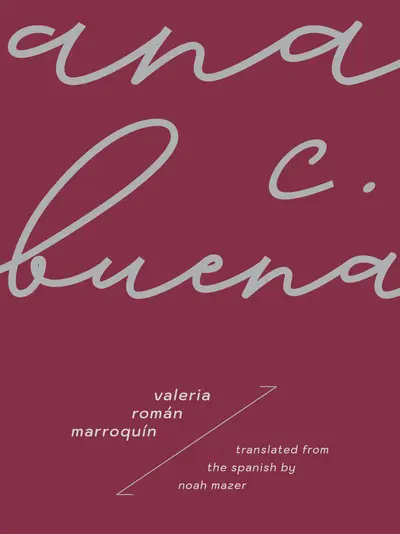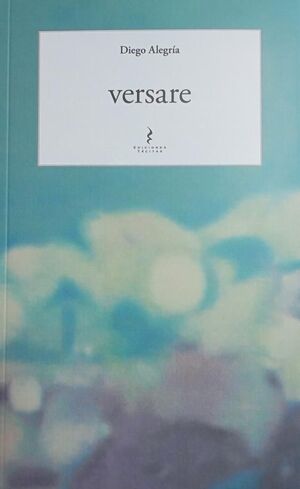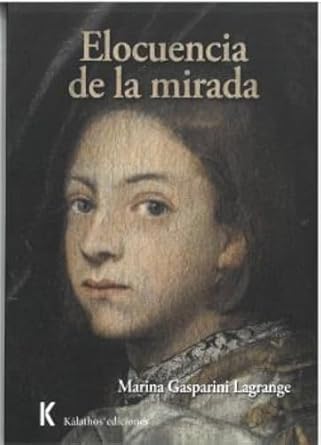 soledad.piedra. Edson Lechuga. Mexico City: Cal y arena, 2016. 116 pages.
soledad.piedra. Edson Lechuga. Mexico City: Cal y arena, 2016. 116 pages.
stone.unturned
As soon as we pick up soledad.piedra (which could be rendered in English as “solitude.stone”), provided we’ve already read other works by its author, we can predict the sensory experience that awaits us upon turning every page of the book, which is solidly constructed, perfectly distilled from the stream of stories that runs through its author’s head and pools in the drawers of his writing desk. It’s easy to be convinced that its narrative succeeds through knowledge, precision, and hefty doses of wisdom and malice, rather than by obeying structures or skeletal outlines in the theoretical mode. Edson Lechuga has given us a volume of five highly experimental pieces deliberately distanced from each other in form, inconsistent in their narrative worlds, inconsistent in elements that transition from minimal to accumulative, but always part of the same poetic voice: through sheer strength of language, they reconfigure the unmistakable style we know from Lechuga’s novels.
We might ask ourselves if the maker of soledad.piedra would define the book’s pieces as “short stories.” It’s been awhile since we stopped conceiving of the short story as a genre with a beginning, middle, and end, centered around a conflict; in reality, any well-told story has these elements. At the same time, according to the new paradigms of the short story, whether it’s identified as a “cuento” or a “relato” in Spanish—we won’t enter into the academic minutiae of the distinction—the genre’s demand for a powerful, pseudo-Cortázarian knockout is ever diminishing, and we can use this phraseology lightly since Cortázar never really said “the novel wins by points and the short story by knockout.”
It’s interesting to note the communicating currents that run between the three parts of the author’s ambitious trilogy of novels—Luz de luciérnagas [Firefly light], gotas.de.mercurio [drops.of.mercury] and the upcoming perros.de.azotea [rooftop.dogs]—and soledad.piedra. Their existence is evident in the atemporal stories of soledad.piedra, including the one that gives the book its title. Its characters’ main concern is life, and, within it, the greatness of literature. Inevitably, they write. Literature is a character, an entity in itself that appears in the book by fortune, never by force.
Edson Lechuga employs a series of peculiar techniques to appropriate reality. In my thinking, he pierces the walls of the real with the five senses common to any mortal, plus a sixth, developed only by a select few, and a couple more known only to him. On top of it all rests the conjunction between narrative and poetry. Narrative as knowledge, gnosis, and poetry as—in Alain Badiou’s terms—the creation of a hitherto unknown Name-of-Being. Lechuga is an expert at finding new-names-of-being, so it’s easy to recognize him as an innate poet. As an example, in the section of soledad.piedra called “soñeus” we find doses of text that we were looking for somewhere, rarified yet somehow familiar to us, i.e., subtle and artful in order to drag along the vulgar, prosaic world, the fleeting material, symbolic of dreams. I’ll cite an illustrative extract:
that was when the tigers began their orgy:
they leapt onto the deer and ripped at their skin, they opened their bellies and made their guts spring out.they tore them apart
they split them, they burst them.
the scene filled up with desperate eyes of dying deer
like the future of men; tiger snouts with meat.between.the.teeth like years; hanging dead animal tongues like the passage of time; maws dripping blood down their fangs like the night drips lies; pained cries of the ruminant, terrible tiger growls like the place where I keep the memory (murderous, fratricidal tigers. beautiful and vicious tigers).
The act of creating new names-of-being is not exclusive to the book’s titular story; we can also discern the process in the other texts, particularly in “Amar a mar” [Love of sea], a painful and terribly beautiful piece.
Nonetheless, with the book’s five parts at hand and all the courage I can muster, I must declare that I roundly refuse to read them as short stories: for me, they’re five novels of limited textual length: micro-novels, if you like. I should clarify that this intuition does not mean to detract from the short story’s merits. I’ll try to argue my interpretation of the pieces as brief novels in three points:
Consciously or unconsciously, Lechuga has adopted new paradigms for the short story, like Alice Munro or Roberto Bolaño, denying the genre’s structural ambitions and endowing it with an expansive space (not equivalent to length) in which living characters can live with with ease, be, pray, and love. And is it not true, as certain literary giants have stated, that the character makes the novel? The pieces “Amar a mar” and “de noche a sur” [south from night] are examples of this. The characters of Karla con Ka and the poet Paolo Ardengo (Lechuga describes “…his rotten desire to shout four truths to existence”) stay with us more permanently than the structures—which are, emphatically, precise and perfect pieces of architecture, just like the micro-novels of Alice Munro.
Edson Lechuga’s totalizing search is palpable in the stories of soledad.piedra—digressive, even expletive in a way that many short story writers deny themselves, adhering to the familiar model of exposition-rising-action-climax-resolution. Edson allows himself to search just as he allows for the opportunity of a full sensory experience.
Lechuga, I must emphasize, is not looking for knockouts, but for a long fight, wresting moments and life from experience and the world to place them cumulatively on his pages.
In soledad.piedra we find transparent and diaphanous signs.fate. They might come from a playing card, a coincidence in the titles of books read by the characters, or the number of a plane or bus ticket, not to mention the coincidence of meeting another being at the designated moment of its self-destruction. What more can we find in soledad.piedra? What we find in all good literature: a journey to the beaches of wonder, from which we return not with a diamond, but with little pebbles, tiny revelations. In this book, there is no fear whatsoever of looking at objects stripped of their concealing veil to reveal, trembling and fragile, what is known as real. Reality is fate. Writing is fate. It’s even fate that we read this book.
Our author knows about the initiatory quality of journeys, whether they be in enigmatic airplanes, nocturnal buses, or never-ending walks (as much in wakeful hours as in dreamed eternities). Over the course of soledad.piedra, we move through at least three physical geographies as well as a handful of interior spaces whose maps are only legible between the lines. But it’s also possible to travel through time, making the aforementioned airplane set course to orbit the globe. Or to live alongside the living. Or to live alongside the dead. We know, as does Lechuga, that to exist is a journey on which we forget our starting point and our destination—on which, in the end, as the poet declares, we find ourselves between two eternities.
Here there is also nostalgia, there is also sensuality. In equal parts, we find devotion to the second person: so much, with such carelessness for the comparative, that the author drifts into a frank homage to that inimitable little piece by Fuentes, Aura, which is not imitated here but made-his-own. In an acknowledged homage to his masters, among them José Carlos Becerra and Nicanor Parra, and to another constellation, mostly composed of writers of the same language, Lechuga makes it clear that he’s a citizen with little interest in being on one side or the other of a border, or an ocean, or a life, but he is and will continue to be a citizen of a language—not necessarily Spanish—a collection of codes and familiar syntaxes.
Lechuga uses sentences with the soltura [ease] suggested by Quiroga for the short story, and he turns to the form—he cultivates the form in his writing, of course—with the famous Lacanian drive invoked by Barthes for the composition of a novel.
To finish, let’s try an imaginative exercise, projecting an image of this fascinating author looking at leaves on the ground, seeds, clouds, sun.water, solitude.stone, how he smells it all, how he touches, even tastes. He tastes the leaf, the seed, the cloud, and he chisels solitude.stone onto the surface of a stone to give that stone eternity. We should ask ourselves, what is the source of these possibilities for words, traded to us in exchange for a few hours of reading pleasure? Edson Lechuga knows that the first step is not to fear language. The other is more demanding—it implies not only consecration, love, and devotion, but also, word by word, staking your life on language.
Isaí Moreno





